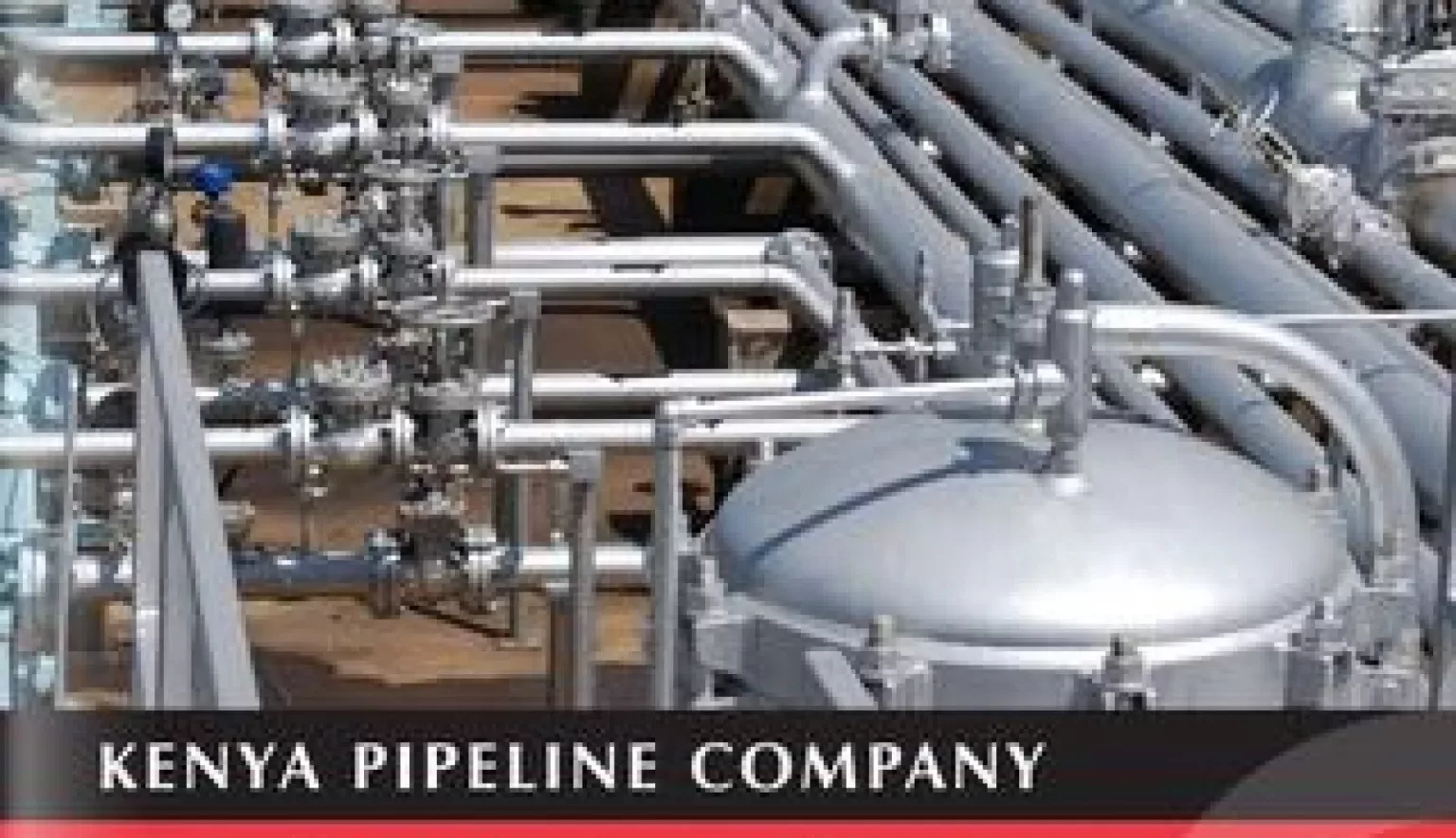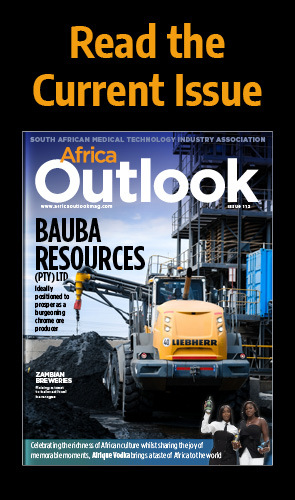The past 12 months has represented a key period within the long and esteemed history of Kenya Pipeline Company (KPC), comprising a series of industry challenges and internal goals being juggled in order to achieve relative success.
REALISING A VISION
With around 30 years of experience in overseeing all of the country’s major oil & gas construction projects, the pivotal energy sector operator is in a unique position of being 100 percent state-owned while still funding its own existence via the projects it undertakes; and with an industry very much in limbo on an international scale, yet a corporate strategy determined to transform and improve, the 2015-2016 chapter of the Kenya Pipeline Company story has been one of the Company’s most significant.
“2015-16 was a year of many successes and challenges for KPC,” affirms the Company’s Managing Director, Joe Sang. “From a strategy perspective, we finalised and started by implementing our 10-year Corporate Strategic Plan, dubbed Vision 2025, which envisages our turnover growing to KES 150 billion and pre-tax profit to KES 80 billion by 2025.
“Financially, our 2015-16 accounts are currently being audited, but we are confident we met our targets.”
Completing the Sinendet-Kisumu pipeline and the leasing of the Petrocity Oil Depot in Konza over that time period, as well as advancing substantially on the landmark Mombasa-Nairobi pipeline project has ensured a natural continuation of its core objectives; and have been compounded also by a general broadening of the organisation via a more refined human resource and remuneration strategy, heightened shareholder engagement procedures, and perhaps most importantly, a more extensive model for engaging with customers.
Sang explains: “We embarked on a major exercise to engage our customers, the oil marketing companies, who previously felt we took them for granted, and who were slowly starting to move away to rail and road transport alternatives.
“We have stopped this customer drift away from KPC by working with our Parent Ministry and other Government agencies and have also started clawing back export markets through the removal of bottlenecks.
“We now have a series of focus areas for 2016-17 that will translate into massive opportunities for advancement, training and career enrichment for staff as we transform into Africa’s premier oil & gas Company.”
FLAGSHIP PROJECTS
Complementing the revenue and employment successes of Kenya Pipeline Company over the past year has been a geographical expansion in line with its Vision 2025 goals, and an improvement in KPC’s industry ranking as a result of its efficiency, reliability, safety and cost effectiveness. Ultimately though, the best gauge of the organisation’s prominence has been the projects themselves.
“First and foremost is the new Mombasa-Nairobi pipeline which is a national Vision 2030 flagship project to replace the current 38-year old pipeline,” Sang says. “Due to cost about Kshs 48 billion, the line is a 450 kilometre 20-inch diameter pipeline complete with four new pump stations in Changamwe, Maungu, Mtito Andei and Sultan Hamud, and two booster pumps in Kipevu.
“It will have an installed flow rate for Phase 1 of one million litres per hour by 2017, Phase 2 is 1.9 million litres per hour by 2023, and Phase 3 will be 2.6 million litres per hour by 2044.”
Currently 50 percent complete, the landmark project will not only bring unprecedented volume and capacity to the country but also new, innovative and more sustainable construction techniques to ensure long-term reliability, safety and environmental benefits, at less operating cost.
These same drivers have formed the basis for all of KPC’s operations at present, spanning across the Kshs 5.7 billion, 122 kilometre Sinendet-Kisumu Pipeline which will turn Kisumu into a focal point for oil & gas commerce in the region; the devolution of the National Pipeline Network which is set to generate vital revenue for Governmental sponsors of the project while also reducing the amount of transportation of petroleum projects via the less environmentally friendly road and rail routes; and the acquisition of Kenya Petroleum Refineries Ltd (KPRL) following the exit of former investor, Essar.
Sang notes regarding the latter: “KPRL is now 100 percent owned by the Government and there have already been discussions between the Ministry of Energy and Petroleum, Kenya Pipeline Company and KPRL on the acquisition of the KPRL facilities by KPC; the benefits of which would create strategic and operational stocks, facilitate a crude oil export initiative, reduce demurrage costs, expand existing LPG facilities in Mombasa, and establish the city as an oil & gas trading hub for the region.”
EXCITING FUTURE FOR OIL & GAS
To ensure the business has an internal structure able to facilitate such high profile and large scale projects, the amount of investments that occur behind the scenes similarly become more grand each year, and the past 12 months have epitomised this notion via a series of technological and facility upgrades.
“With the type of business venture that Kenya Pipeline Company aspires to enter under Vision 2025, the organisation’s internal communication infrastructure, diversified data communication, use of technology and integration of systems for business continuity and mitigation against risk will be a top priority,”
Sang emphasises. “We are now focusing on improving our internal communication infrastructure and diversifying into the data communication sector to create a new revenue stream and also to aid the integration of systems.
“In addition, the enforcement of systems through policies, the use of technology as a business driver, and enhancing business continuity and risk management will be part of our strategy this year going forward.”
From a facility perspective, the upgrade of the Eldoret Truck Bottom Loading Facility at its Eldoret depot is set to increase loading capacities from 220 cubic metres an hour to as much as 578 cubic metres, while an upgrade to its storage capacities in Nairobi will also be ready by the end of 2016.
And ensuring the smooth transition of all of these enhancements is a brand new human resource and restructuring strategy geared towards long-term efficiency and flexibility.
“KPC is undergoing transformational changes and that is why we are in the middle of a Company-wide restructuring and job analysis exercise with the intent to refresh existing structures, re-equip and re-energise our people, and ensure KPC is fit-for-purpose for an exciting oil & gas future for Kenya.”
AN EFFICIENT MIDSTREAM PLAYER
A fruitful vision of the industry’s future does not just stop at the organisation’s core projects and internal structure either though, and emanates also into the wider Kenyan communities via a corporate social responsibility (CSR) strand which epitomises the kind of commitments KPC has to its stakeholders, customers and the country as a whole.
Sang says: “Our commitment to our stakeholders and improving the quality of lives of communities surrounding our installations is central to our corporate identity. We always endeavour to have a positive impact on society through improving the lives of individuals, groups and communities while at the same time enhancing our corporate image and brand.
“For us, reaching out to the communities and contributing to their socio-economic development constitutes our core agenda and over the years, we have supported weaker sections of society by increasing their capacities and potential through various initiatives.”
Embracing education, youth empowerment, equal opportunities among women and people with disabilities, health, sanitation, energy conservation, the environment and sporting sponsorships, the Kenya Pipeline Company fraternity continues to volunteer their skills, time and funds towards community projects as a way of investing in the communities adjacent to the Company’s pipeline network, and forms a vital part of the organisation’s overall ethos looking forward.
“Over the next year, we will have completed the Mombasa-Nairobi pipeline, the Eldoret Bottom Loading Facility and the additional storage tanks in Nairobi,” Sang declares, glancing ahead.
But perhaps the most important indicator to hone in on is how KPC plans to continue reacting and innovating within the confines of a volatile and – at present – challenging oil & gas climate.
Sang concludes: “The oil & gas sector is changing very quickly and presents various challenges and opportunities to our business. That is why we have to cement our place as an efficient midstream player in the Kenyan oil & gas industry, and strengthen linkages with upstream and downstream players to bring down the cost of energy.
“To strengthen our status in the oil & gas arena in East Africa, KPC has set up the Morendat Centre of Excellence for Oil & Gas Pipelines with the aim of developing human resource capacity for partner states in oil & gas pipeline management, and operations and maintenance to reduce dependence on expatriate labour.”































